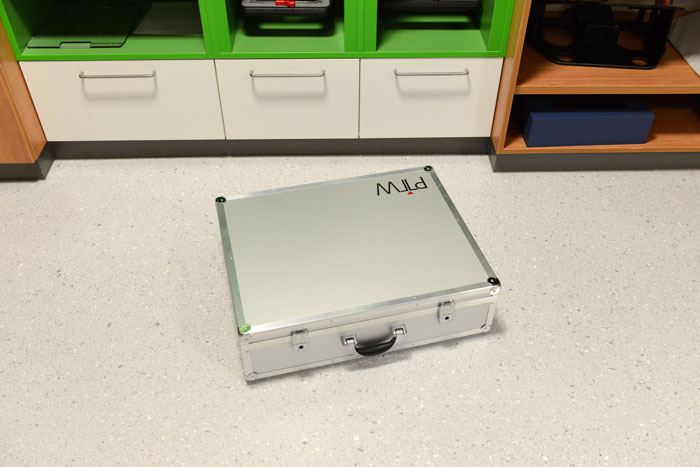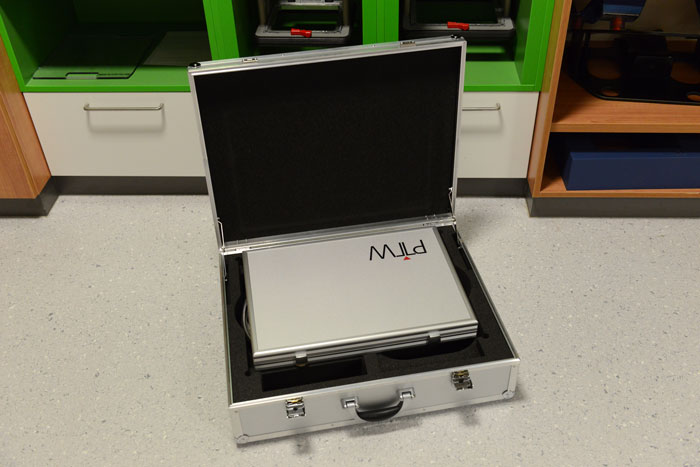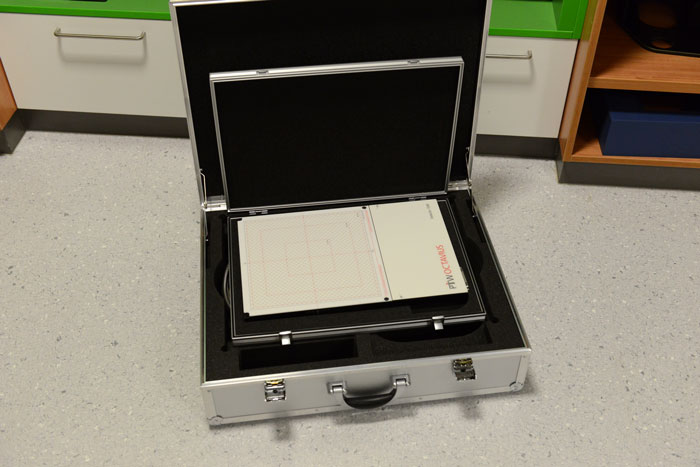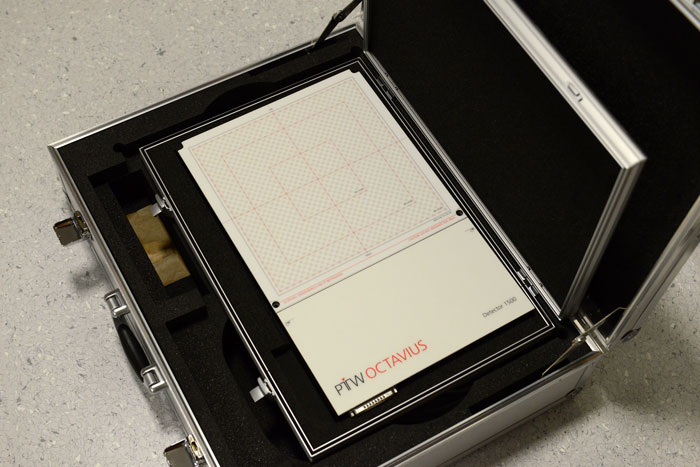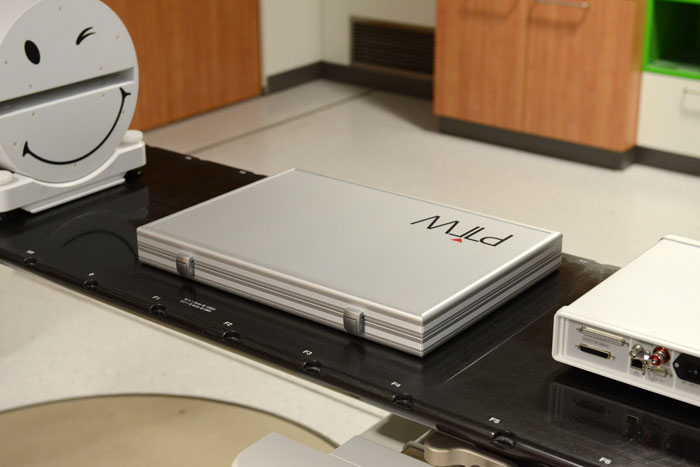The OCTAVIUS Detector 1500
While the outer dimensions of the OCTAVIUS Detector 1500 (OD1500) are the same as for the OCTAVIUS Detector 729 (OD729) and the 2D-ARRAY seven29, there are some differences. The following table demonstrates the evolution in the last 10 years.
The OD1500 uses a new checkerboard arrangement of chambers. The maximum field size of 27 x 27 cm has remained constant, but the number of air-vented ionization chambers nearly has doubled. The field coverage has increased from 25% to 38.7%. By shifting the OD1500 in the longitudinal direction by 5 mm and repeating the measurement, the coverage can be doubled, and spatial resolution improved. This technique is used when two OCTAVIUS 4D measurements are merged.
| Parameter | seven29 (T10024) | OD729 (T10040) | OD1500 (T10044) |
|---|---|---|---|
| Number of ionization chambers | 729 | 729 | 1405 |
| Dimension of chambers | 5 x 5 x 5 mm | 5 x 5 x 5 mm | 4.4 x 4.4 x 3 mm |
| Chamber volume | 0.125 cm3 | 0.125 cm3 | 0.06 cm3 |
| Horizontal distance betw. chambers | 10 mm | 10 mm | 10 mm |
| Vertical distance betw. chambers | 10 mm | 10 mm | 10 mm |
| Diagonal distance betw. chambers | 14.1 mm | 14.1 mm | 7.07 mm |
| Coverage (meas. area / field area) | 25% | 25% | 38.7% |
| Chamber voltage | +400 V | +1000 V | +1000 V |
| Maximum dose rate | 16 Gy/min | 48 Gy/min | 96 Gy/min |
| Ion collection time | 390 µs | 156 µs | 57 µs |
| Maximum dose per pulse | 0.15 mGy (99.5% sat.) | ~0.73 mGy (99% sat.) | ~2 mGy (99% sat.) |
| Mass of 2D array with cable | 3.2 kg | 5.4 kg | 6 kg |
| Interface | ARRAY Interface (T16026) | Detector Interface 4000 (T16039) | Detector Interface 4000 (T16039) |
| Connection to PC | RS232 | RS232 or Ethernet | RS232 or Ethernet |
| Minimum measurement interval | 200 ms | 200 ms | 100 ms |
The OD1500 uses the same Detector Interface 4000 (T16039) as the OD729 (and as the STARCHECK maxi). This means that a single Interface 4000 can be used on all three devices without modification.
We purchased the OD1500 without interface, because we already had two type 4000 interfaces (one for the STARCHECK maxi, one for the OD729).
Expensive devices come in a case:
VERY expensive devices come in a case inside a case:
There it is!
The slim inner case has been made possible because the cable is now removable (in contrast to the OCTAVIUS Detector 729 and the seven29). The measurement area is still the same: 27 x 27 cm (or 26 x 26 cm, if one measures the distance from chamber center to chamber center):
This also means that reconstruction in VeriSoft will end at radius 13 cm, although the Standard top has radius 16 cm. There simply is no measured data in this outer shell.
Another picture of the inner case. Looks great:
As described in the paper from Ann Van Esch, the OCTAVIUS Detector 1500 has many advantages over the two older models (e.g., twice the detector density, no lines without detectors, better shielding of the electronics, can handle higher dose rates, has faster readout times, etc.). Specifications are listed in the table on top of this page.
